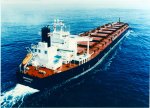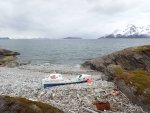Kukri
Well-known member
It only works when rates are good, but there is a reason that there are some well off people in shipping. But the end of life value of an older ship is generally sofa change.
I’m too young to have seen it for myself - you would have to be 71+ now - but I’ve been told that in 1971 a VLCC could pay for herself in four voyages. And six years later she couldn’t do anything without running up a bigger loss. Helmut Sohmen always says that persuading his father in law to sell most of his fleet as they came off timecharter was the best thing he ever did.
Last edited:


